Cantilevers help engineers and architects create buildings that appear both heavy and light. The post goes over some great examples by architects that use structural principles like tension, compression, moment, and shear, to create bespoke structures that are simultaneously impressive feats of engineering and extraordinary spectacles.
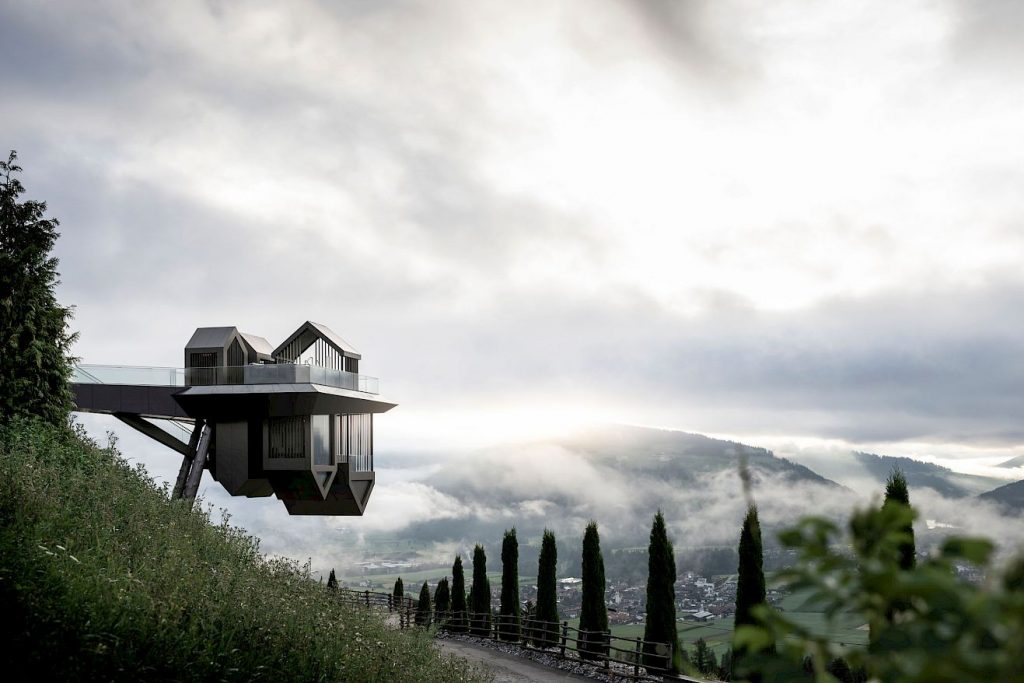
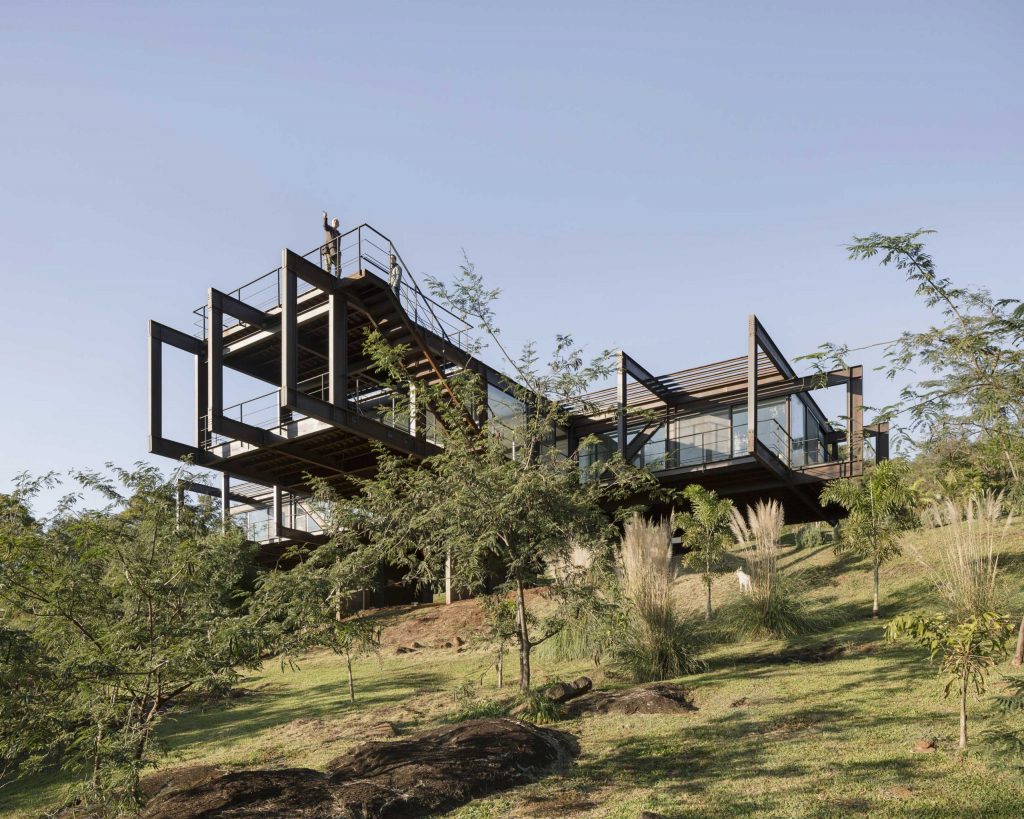
Ensayo Himmel by Bauen
Situated in a rural area in Guaira, a residence that Paraguayan architecture office Bauen has conceived for a local couple to settle down in for their retirement cantilevers off three concrete walls to project over the site’s steep and lush landscape. The project named Ensayo Himmel leaves nature as the protagonist and not the construction.
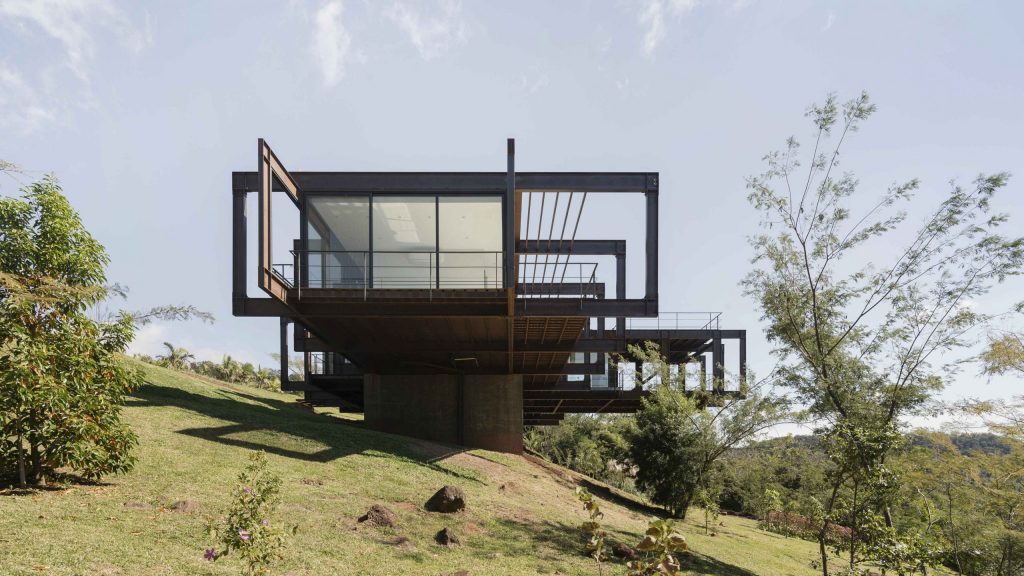
Ensayo Himmel by Bauen
The steel-and-glass structure arises from the need to have a system that is as simple, rustic and prefabricated as possible, taking into account the location on a hill that is difficult to access with no basic services.
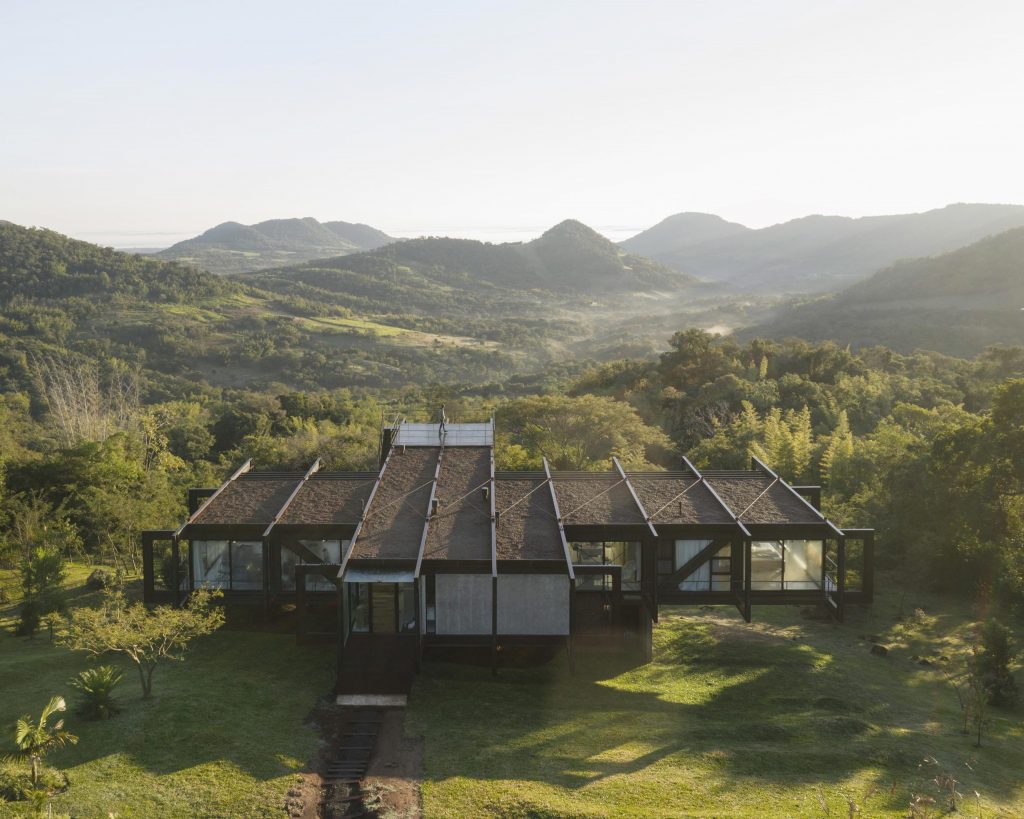
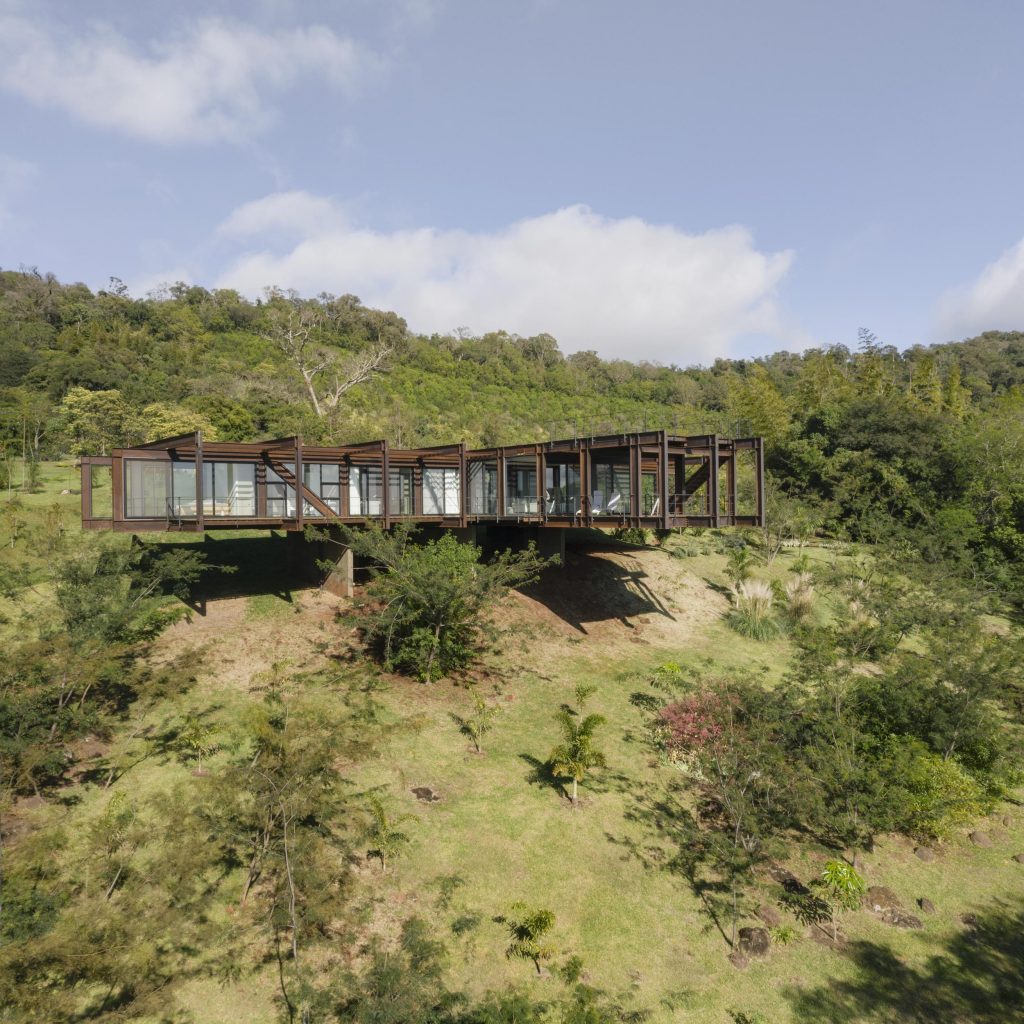
Ensayo Himmel by Bauen
The structural resolution ends up defining the aesthetics of the house, the structural openings are simply closed with glass to create windows where each square metre of it allows the magnificent surrounding view to filter in. From every point of the property there is an impressive view of the surrounding mountains.
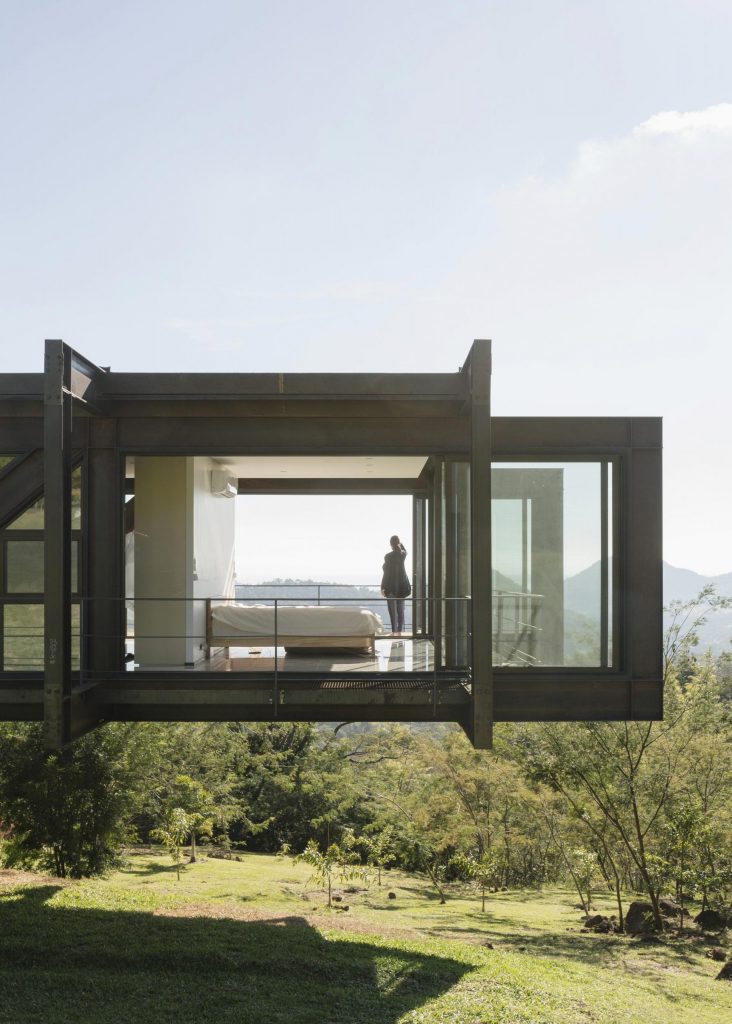
Ensayo Himmel by Bauen
According to the architects, the primary structure was manufactured in 60 days, and assembled in only seven using bolted connections. The team did their best to minimize the felling of trees, avoid damaging the ground and leave the site as natural as possible.
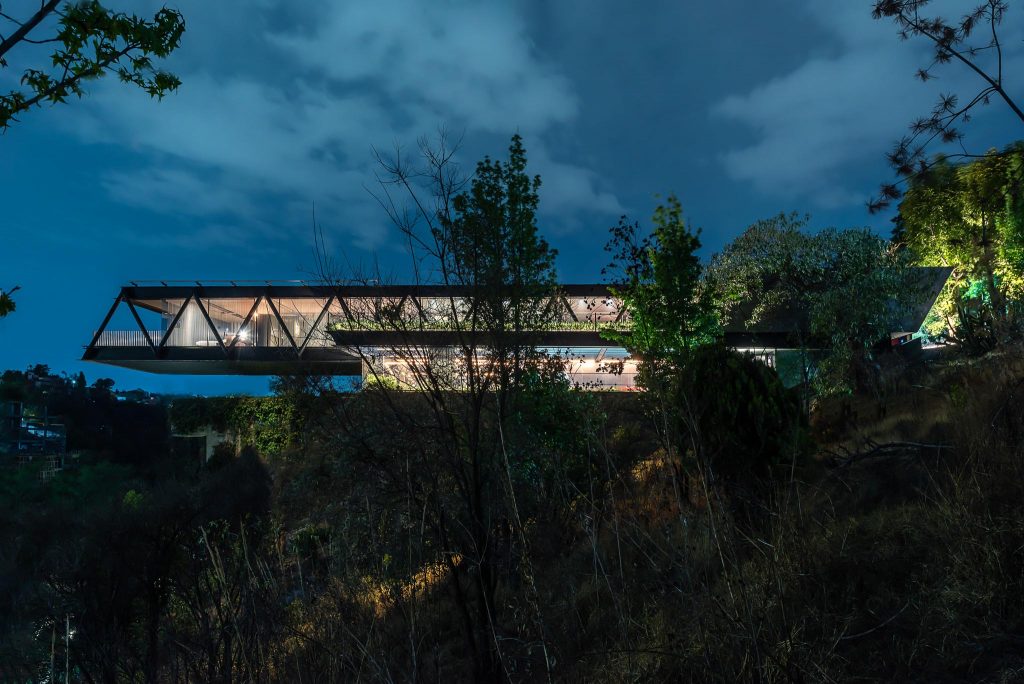
CH73 House by LBR&A
The CH73 House by Mexican architecture studio LBR&A has also been designed for a retired couple in a Mexico City neighbourhood, where it occupies a long, slender site that slopes down toward a ravine. The full-time residence is meant to stand in contrast to the prevailing architecture in the area, where natural environment has been severely degraded due to insensitive development.
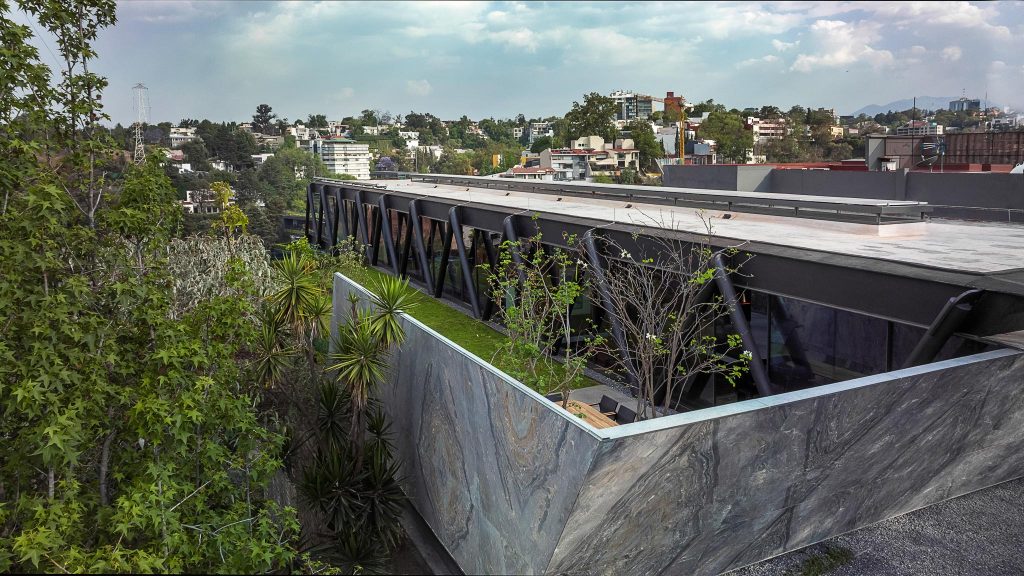
CH73 House by LBR&A
Among other conditions, which informed the design apart from sustainability concerns, was the existence of a 30-metre-tall, masonry retaining wall that was built around five decades ago. The resulting self-sustainable proposal comprises a two-storey building with one side extending 20 metres over the site. According to the studio, prefabricated components allowed for the cantilevering volume to be constructed without causing any damage to the landscape.
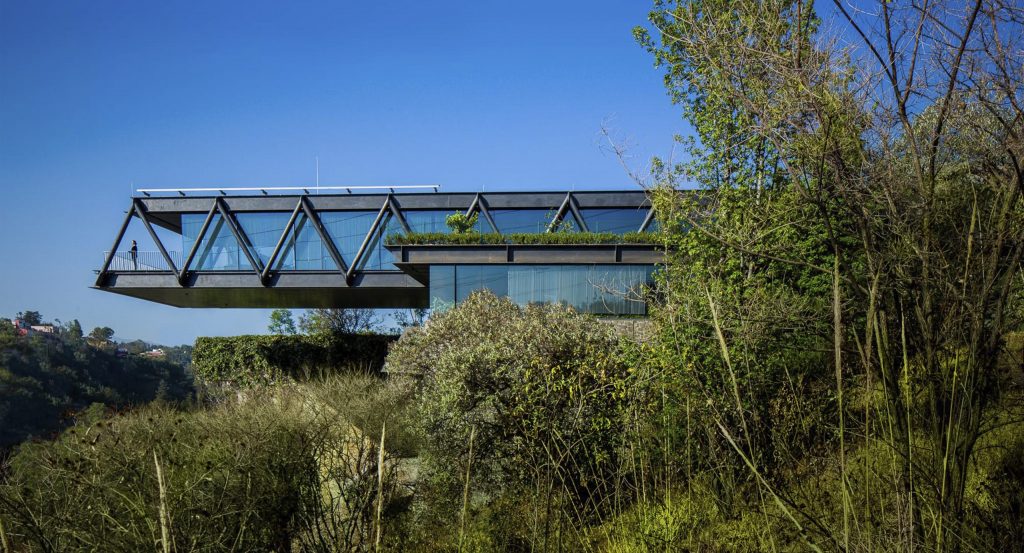
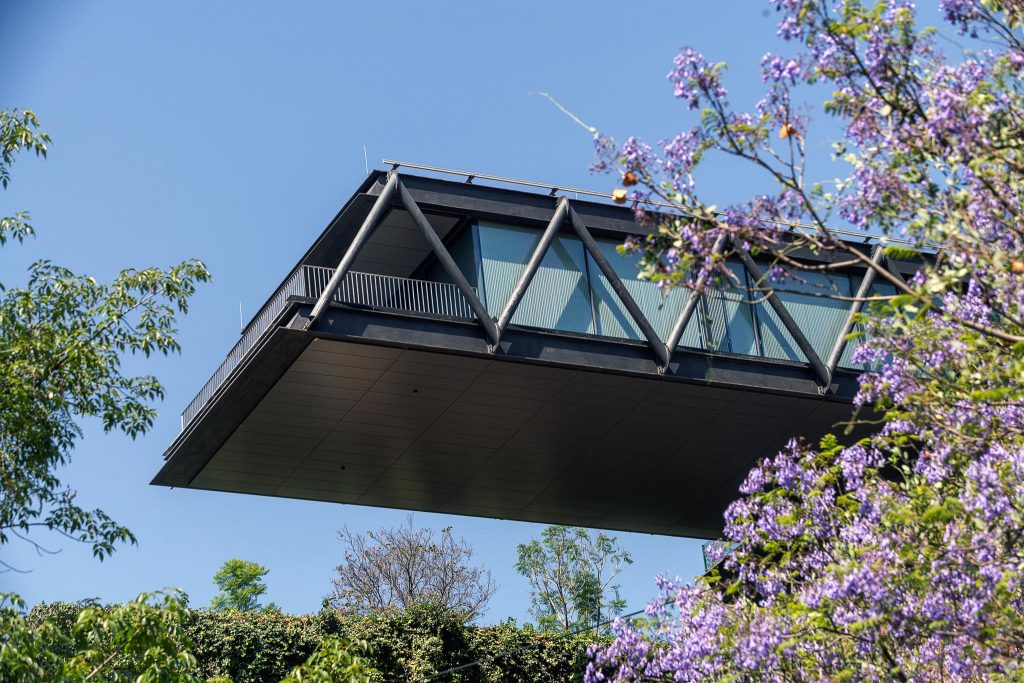
CH73 House by LBR&A
Totaling 1,023 square metres, the house has a mix of public and private spaces spread across its two levels. The upper level holds the entrance, communal areas and main bedroom, while the bottom level contains a garage, gym, lap pool, bathroom and machine room. The spaces have a flexibility of use, which can be easily adapted to the changing needs of the clients.
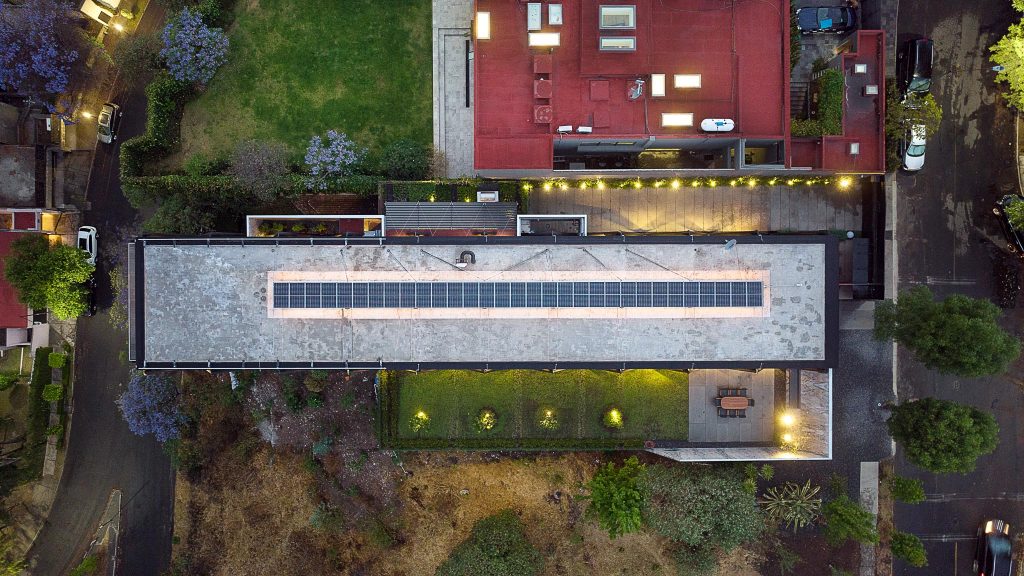
CH73 House by LBR&A
The house is built with passive strategies in mind. Sustainable features that help reduce energy consumption include optimal orientation and natural ventilation. The whole building is powered by solar panels and a system of underground pipes that are used to extract heat from the ground, which is then converted into electricity via a heat pump. Wastewater is treated with a biodigester system prior to being used for irrigating the property and surrounding land.
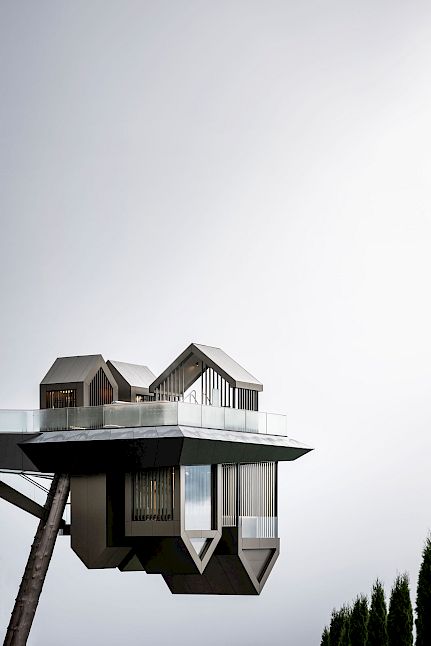
Hub of Huts by NOA (also header image)
International firm NOA (Network of Architecture) defies gravity law with a cantilevered wellbeing extension to the Hotel Hubertus in South Tyrol. The iconic concept plays with the horizon line, the perception of upside-down, and the points of view.
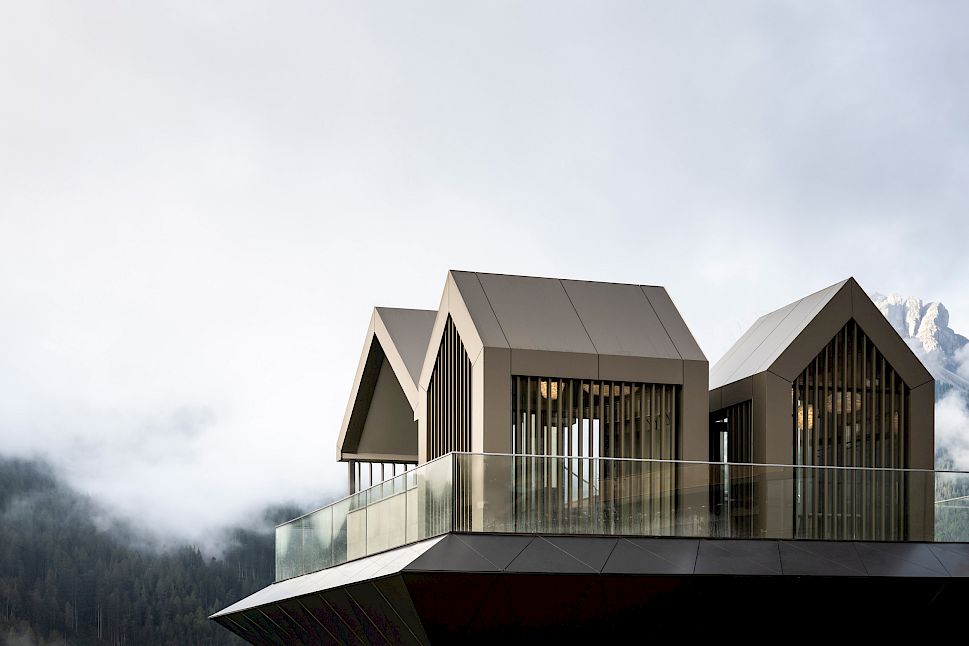
Hub of Huts by NOA
The concept named Hub of Huts came to life from the observation of the surrounding landscape reflected in the swimming pool. The designs seems to materialise what one sees mirrored on the surface of the water, as if the image were a transient rendering ready to be converted into reality.
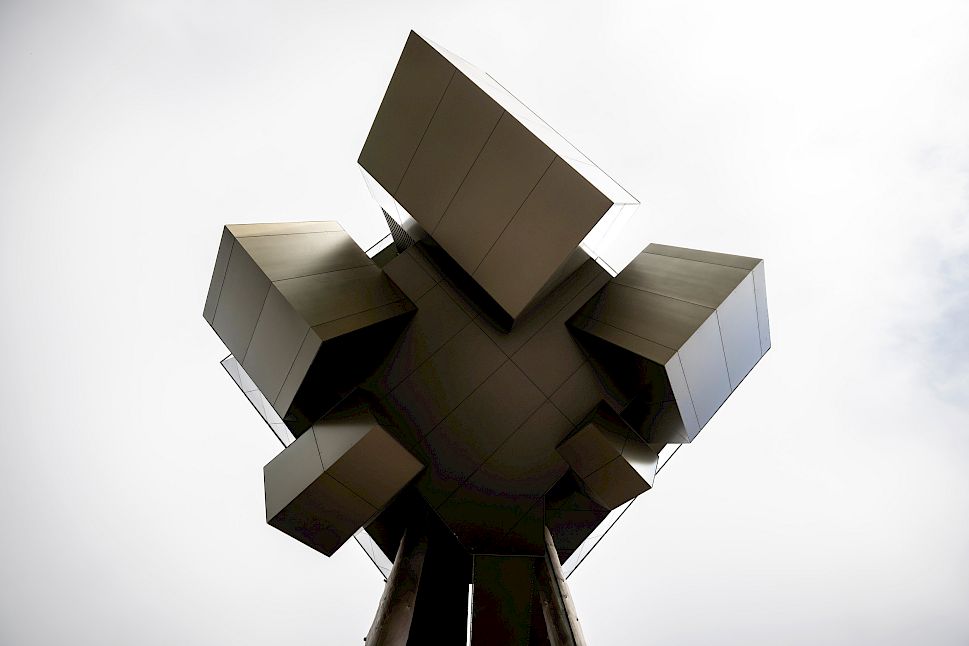
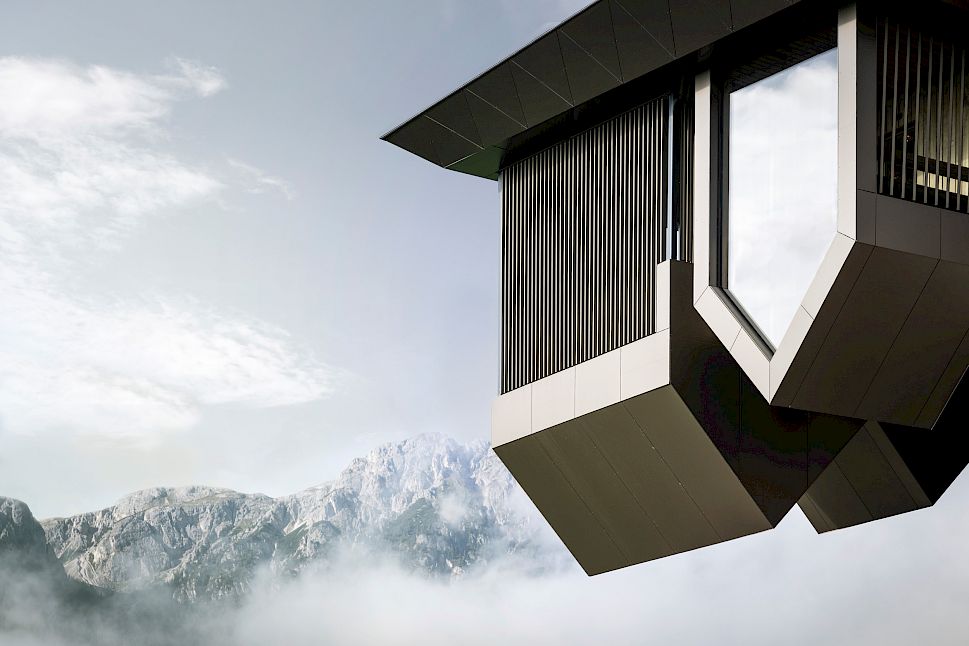
Hub of Huts by NOA
The structure is located on the southeast side of the facade, in a position symmetrical to the projecting glass-bottomed pool that served as inspiration for the new project. Envisioned as a rock stranded between earth and sky, the pool was created by the studio for the Italian resort in 2016. Like the pool, the new wellness area is also detached from the main building: the platform hovers 15 metres above the ground and is supported by two pillars clad in larch logs, similar to those that punctuate the facade behind.
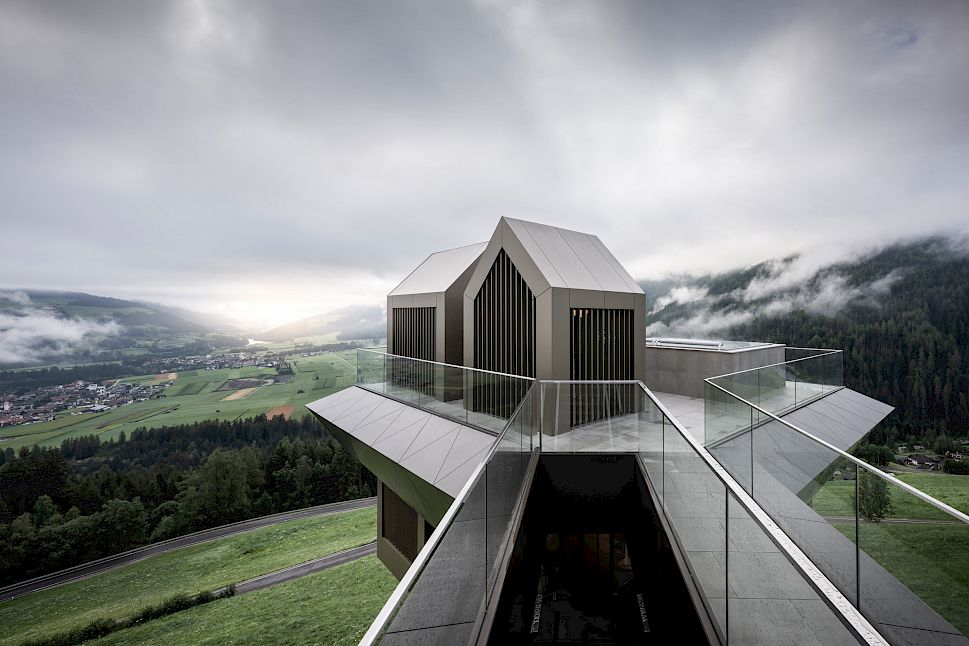
Hub of Huts by NOA
On the platform, individual microstructures with gabled roofs accommodate the functional programme on two levels. A surprising element is the lower level, where the horizon undergoes a 180° rotation, and the huts appear to be anchored upside down.
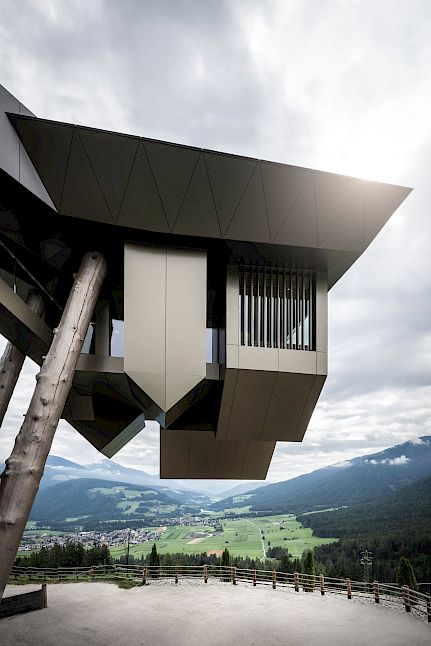
Hub of Huts by NOA
The decision to work with inverted pitched roofs is a choice motivated by functional reasons. On the one hand, the team sought to mimic the architecture of a mountain village, and on the other hand, they were looking for a practical solution to allocate the water purification system for the swimming pool and the seating tiers for the sauna. Moreover, the offset of the huts and the alternating orientation of the roof ridges allow a 360° view of the landscape, the real centrepiece of the project.